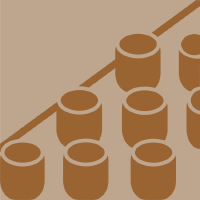Topic Menu
► Topic MenuTopic Editors


Additive Manufacturing of Architected Metallic Materials
Topic Information
Dear Colleagues,
Metal additive manufacturing (AM), commonly known as 3D printing, facilitates the creation of three-dimensional structures composed of metals and their alloys. Leveraging the layer-by-layer approach inherent to AM techniques, intricate cellular architectures can be produced, bearing similarities to naturally occurring structures. By combining the free-form capabilities of AM with simultaneous multi-material printing, one can fabricate architected materials with customized functionalities and mechanical properties. These advanced metallic materials have extensive applications in high-value industries such as healthcare and mobility. In this Topic, we aim to showcase the latest research on the design, fabrication, and applications of 3D-printed architected metallic materials. This collection will also cover advances in material characterization, post-processing, computational modeling (including artificial intelligence, topology optimization, and failure analysis), and applications in biomedical engineering (such as orthopedic implants). We invite contributions from the scientific community exploring the frontiers of 3D-printed architected metallic materials, their underlying principles, and the myriad applications they enable.
Dr. Mohammad J. Mirzaali
Prof. Dr. Amir A. Zadpoor
Topic Editors
Keywords
- metal additive manufacturing
- 3D printing
- architected materials
- cellular architectures
- multi-material printing
- customized functionalities
- mechanical properties
- material characterization
- post-processing
- computational modeling
- artificial intelligence
- topology optimization
- failure analysis
- biomedical engineering
- orthopedic implants
Participating Journals
| Journal Name | Impact Factor | CiteScore | Launched Year | First Decision (median) | APC |
|---|---|---|---|---|---|

Coatings
|
3.4 | 4.7 | 2011 | 13.8 Days | CHF 2600 |

Journal of Manufacturing and Materials Processing
|
3.2 | 5.5 | 2017 | 14.2 Days | CHF 1800 |

Materials
|
3.4 | 5.2 | 2008 | 13.9 Days | CHF 2600 |

Metals
|
2.9 | 4.4 | 2011 | 15 Days | CHF 2600 |

Micromachines
|
3.4 | 4.7 | 2010 | 16.1 Days | CHF 2600 |

MDPI Topics is cooperating with Preprints.org and has built a direct connection between MDPI journals and Preprints.org. Authors are encouraged to enjoy the benefits by posting a preprint at Preprints.org prior to publication:
- Immediately share your ideas ahead of publication and establish your research priority;
- Protect your idea from being stolen with this time-stamped preprint article;
- Enhance the exposure and impact of your research;
- Receive feedback from your peers in advance;
- Have it indexed in Web of Science (Preprint Citation Index), Google Scholar, Crossref, SHARE, PrePubMed, Scilit and Europe PMC.

